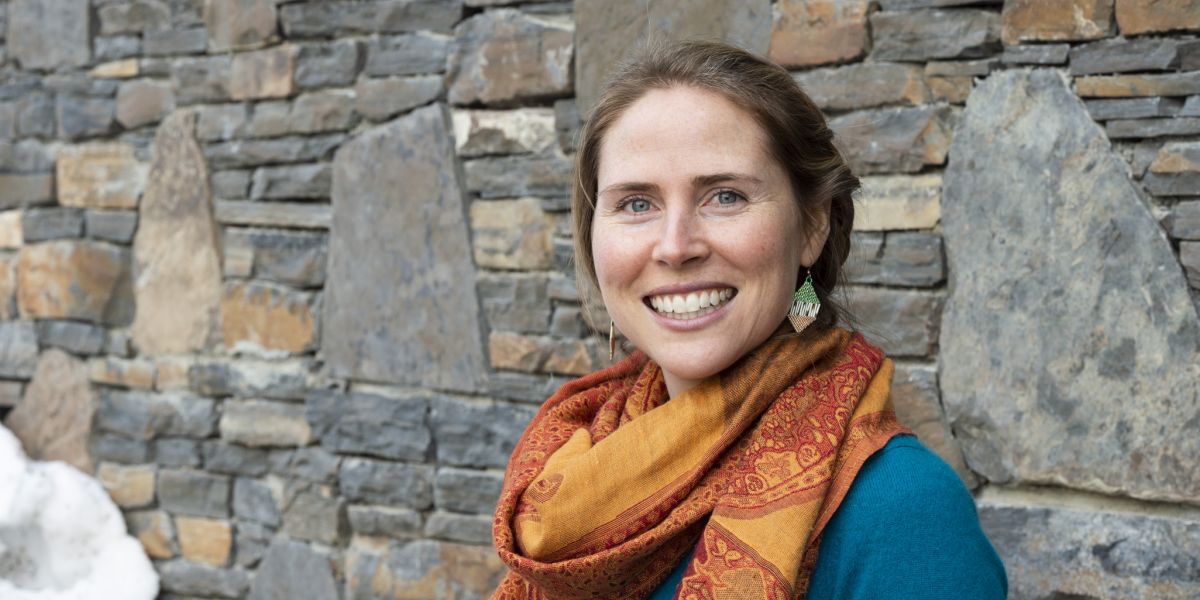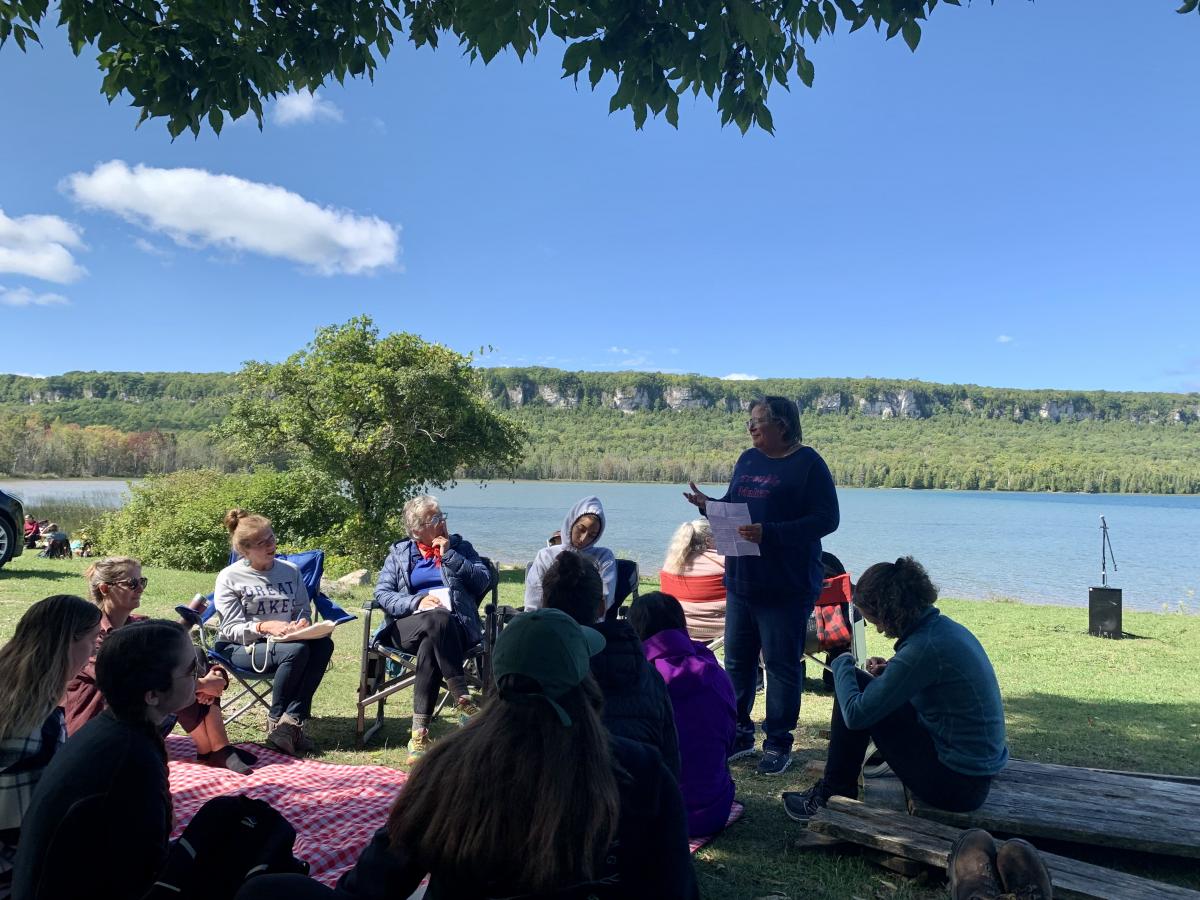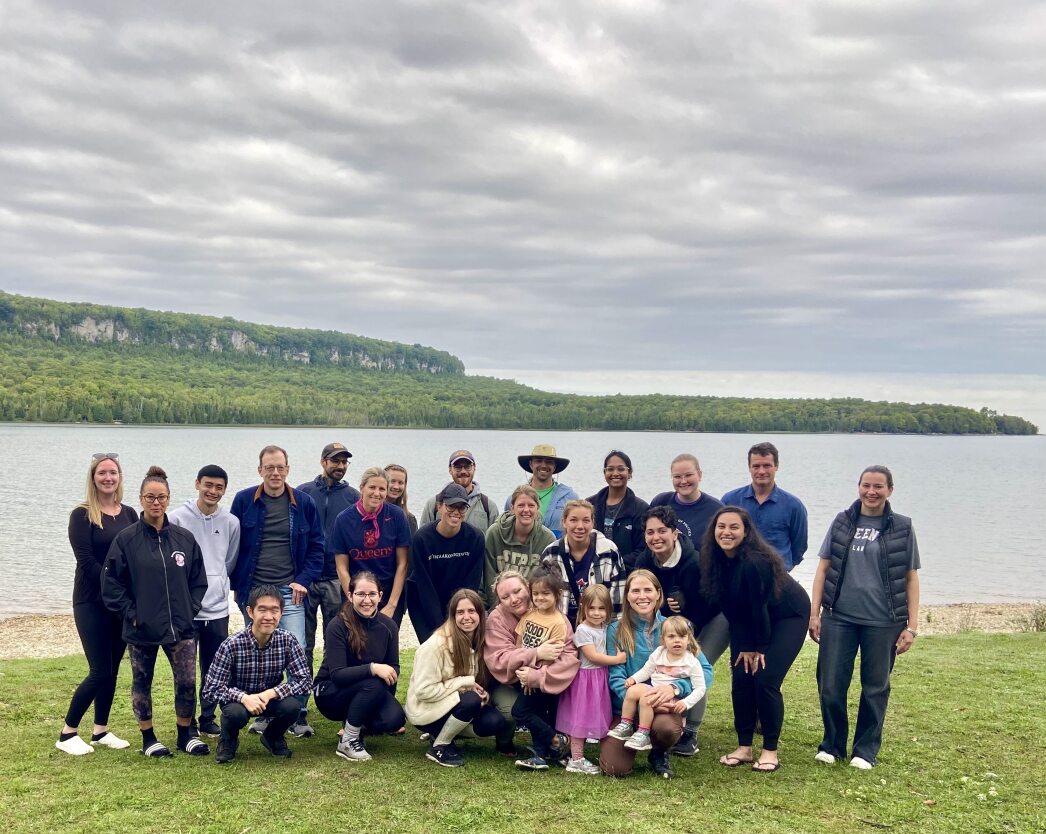Indigenous law beyond the classroom
September 27, 2023
Share
Lindsay Borrows, an assistant professor in Queen’s University’s Faculty of Law, is spearheading a shift in the teaching and understanding of law by bringing land-based and Indigenous community-engaged education into the heart of legal discourse. Her goal: to demonstrate that we can be enriched by an understanding of law that transcends textbooks and what can be learned in the classroom.

Indigenous legal traditions and language revival
Prior to entering law school, Borrows researched linguistics and worked closely with various Indigenous groups on community-engaged cultural revitalization projects. Driven by her Anishinaabe heritage and her membership in the Chippewas of Nawash First Nation, she sought to learn the language of her grandmother’s family, Anishinaabemowin. It was then that she observed the significant disparities in resources available for learning Indigenous languages, which often lack the immersion opportunities that are readily available for more widely spoken languages, like English or French.
“As I turned from language towards legal studies, I saw how similar learning Indigenous law was to learning an Indigenous language,” says Borrows. “In both cases I was left asking the same question: where and how do I find fluent communities to immerse myself in?”
These parallels between Indigenous languages and Indigenous law eventually led her to author Otter’s Journey Through Indigenous Language and Law, a book that explores the intricate connections between these fundamental aspects of Indigenous culture. Language plays a pivotal role in articulating Indigenous law due to the deep worldviews embedded within Indigenous languages. Anishinaabemowin, for example, is heavily verb-based, emphasizing an active, storytelling approach to communication. This directly influences the legal processes and negotiations within the Anishinaabe legal tradition, incorporating ceremony and storytelling practices. Integrating language revitalization alongside the study of Indigenous law is an essential component to comprehending the depth of these traditions.

Cultivating a multifaceted legal mind
In law school, Borrows explored how different Indigenous communities address complex issues using their own internal legal resources. She repeatedly witnessed the centrality of family, Elder teachings, community, and compassion, which stood in sharp contrast to the Canadian legal system’s foundation. Indigenous law, unlike Canadian law, is not structured around centralized institutions like a legislature or a court system. Instead, community-based, deliberative methods are used to discuss, enact, and live law.
These community-driven processes are critical in understanding and strengthening Indigenous legal traditions after many generations of colonial oppression. Earlier this month, Borrows led a four-day intensive field course, Indigenous Law in Practice, also known as “The Anishinaabe Law Camp” where students immersed themselves in land-based and community-based learning on the reserve of the Chippewas of Nawash First Nation. Participants camped together along the shores of Georgian Bay, and learned law through forest walks, participating in a sweat lodge, visiting with Elders, knowledge-keepers and leaders, beading, and engaging with oral stories through a legal lens. They also learned about treaties and contemporary efforts to bring community claims for Aboriginal rights and titles to Canadian courts.
A sacred fire-lighting opened the course and remained lit for the duration of the four days, symbolizing the importance of ceremony in Anishinaabe law. Every aspect of community life, from gendered practices like beading and food harvesting, to everyday actions, holds lessons about Indigenous legal principles, standards, protocols, and guidelines.
“The goal is to show students how law transcends textbooks,” Borrows says. “By having them participate, observe, listen, and learn from members of the community, they can begin to foster humility and patience in their journey to understanding Indigenous law.”

Borrows’ passion for experiential learning stems from the belief that it leads to a deeper, more transformative understanding and better prepares students for legal practice. Her approach to teaching Indigenous law bridges the gap between academic learning and lived experience, since Indigenous law relies on traditional stories, songs, ceremonies, land, and language to define its legal practices. Students are taken beyond the classroom and into nature, where they are given the opportunity to engage with the environment, deepening their understanding of harmony and interconnectedness.
Central to the course is the exploration of how the natural world itself can serve as a legal precedent. By interpreting the land as a living archive of legal wisdom, the class examines alternative methods of deliberation, decision-making, and dispute resolution, reflecting on the profound connection between nature and the Indigenous legal framework.
“Aligning law with the cultural context of those it affects enhances its perceived legitimacy in addressing complex issues,” says Borrows. “It’s a reflection of living law, not confined to books or legal databases.”
As she continues at Queen’s, Borrows hopes that more law students will have the opportunity to engage with Indigenous communities to understand that there is not a singular way to approach legal matters. Her commitment to community-engaged research ensures that Indigenous voices are not only heard but can also actively shape the path of academia.
To access more information on Indigenous resources and events, please visit the Queen's Office of Indigenous Initiatives website.
![[Queen's campus during spring]](/gazette/sites/gazettewww/files/styles/xsjpg1x3to2/public/2024-03/Untitled%20-%202024-03-12T163125.391.jpeg?itok=51KjGZhK)


